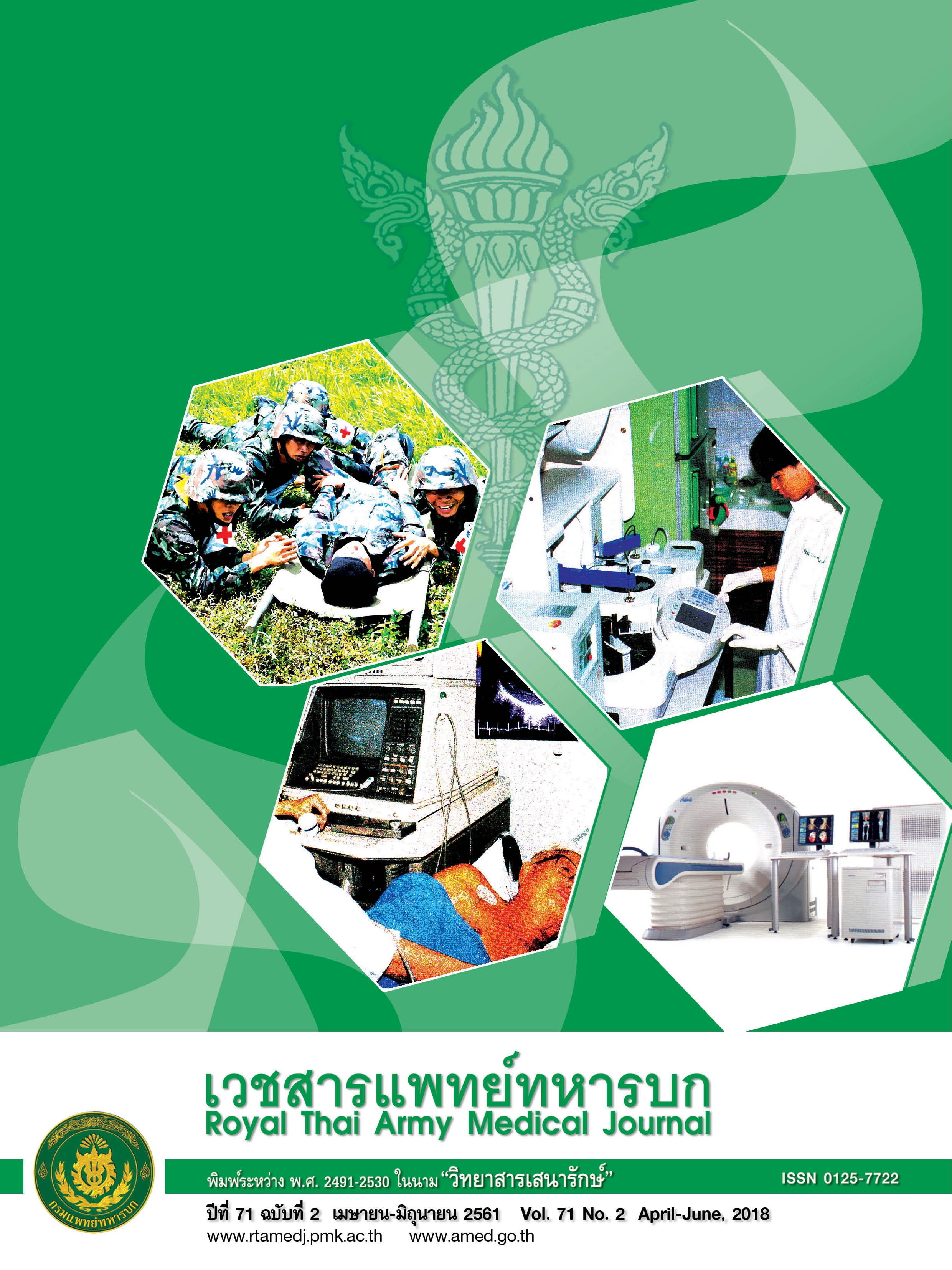Association between the Maternal Occupational Factors and Low Birth Weight among Pregnant Women Receiving Delivery Care at Public Hospitals in Rayong Province
Main Article Content
Abstract
Objective: To examine the relationship between low birth weight outcomes and maternal working condition such as physical demands, work periods during pregnancy, working hours, shiftwork, hours of standing during work, work posture and job stress among pregnant women who delivered in government hospitals in Rayong province. Methods: A hospital-based case-control study was conducted. Cases were 66 women who delivered low birth weight (LBW) infants and controls were 271 women who delivered normal birth weight infants in 5 public hospitals in Rayong province during 1st August 2016 to 15th November 2016. Data were analyzed using Multiple logistic regression. Result: Medium cold exposure was associated with decreased LBW risk (OR = 0.31, p-value = 0.003), high cold exposure was associated with decreased LBW risk (OR = 0.19, p-value = 0.010) when compared with low cold exposure, medium level of awkward position was associated with increased LBW risk (OR = 2.51, p-value = 0.018) when compared with low level of awkward position, previous LBW history was associated with increased LBW risk (OR = 9.13, p-value < 0.001), preterm labor was associated with increased LBW risk OR = 12.41, p-value < 0.001). Conclusion: Since the working conditions were various while the sample size was limited, this study was still unable to identify mothers’ working conditions related with LBW, and further studies are needed.

